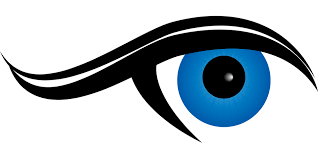Pupil Analysis
More than..
Meets the Eye
Meets the Eye
The Pupils
The pupil is the central aperture of the iris, formed by the circular muscle, bordered with the pupillary margin and regulating light flow penetration into the inner mediums of the eye.
The pupil of the eye and its photo-reaction are visible reflections of the functional state of different brain structures. Information is combined about both afferent (somatic) and efferent (vegetative) components of cranial-cerebral innervation and pupilomotor systems of the eye, and the pupil is an accessible and informative object for evaluating truncus cerebri activity.
Pupil reflexes play the primary role in making a diagnosis of many neurological diseases as a part of well-known syndromes: Bernard-Horner, Adie’s, Argylle-Robertson, Parinoud’s etc. Changes in the pupil of color, dimensions, shape, position of center, equality and reflector reactions all have clinical significance.
Deformation of Pupils
Under normal conditions, pupils have a regular round shape with even edges. Pupil deformation, in most cases, is associated with local diseases of the iris. But such deviations can also take place in the dysfunction of the innervation components of the pupilomotor system at all its levels. It is necessary to state the difference between the deformation as a consequence of the dystrophic processes, caused by a local disease, and the dystrophy, developed reflexively as a consequence of diseases of internal organs and the central nervous system. Several types of pupil deformations can be distinguished:
* Drawing (oval-elliptic forms)
* Local flatness (sector deformations)
* Multiformity
Such changes of pupil configuration, observed in one eye, in most cases, are a symptom of pathology and when observed in both eyes, the signs of hereditary predisposition.
Deformed pupils, caused not by the shift of pupillary belt stroma, but by “melting” of some parts of the pupillary margin, are considered to be false variants.
Studies have shown that such changes are in connection with the symptoms of those organs, whether reflexogenic zones situated in the iris sectors, adjacent to the deformed areas of the pupil (pupillary area) or situated at the same direction (ciliary area). Multiform deformations are found mostly in patients with brain tumors.
Pupillary flatness, not less than one sixth of pupil circumference, is considered to be significant in showing active pathology.
PupilAnalysis.com utilizes a complex algorithmic data analysis to determine several parameters of the pupil including miosis, mydriasis, anisocoria and various pupillary deformations that include drawing in-out, oval-elliptic forms, local flatness, sector deformations, decentrations and multiformities.
